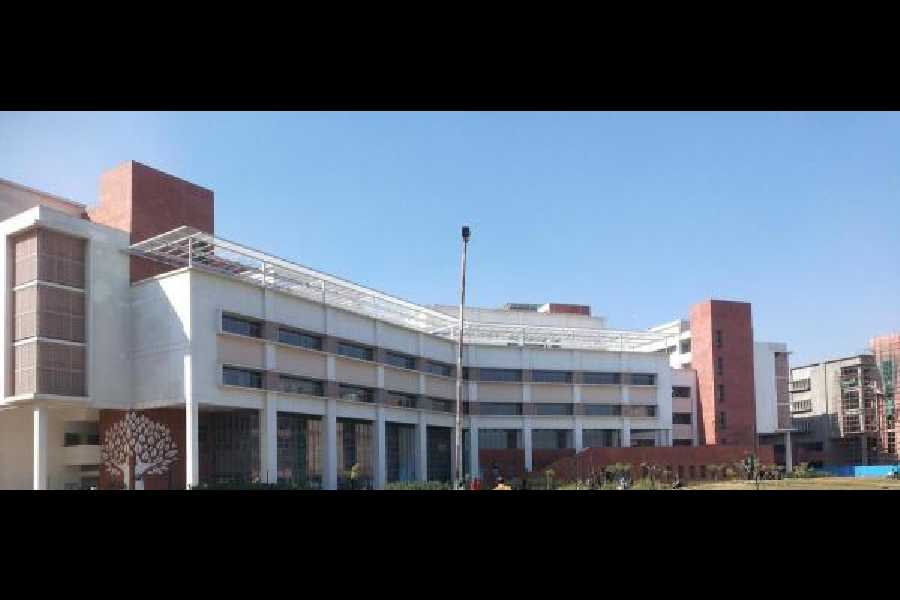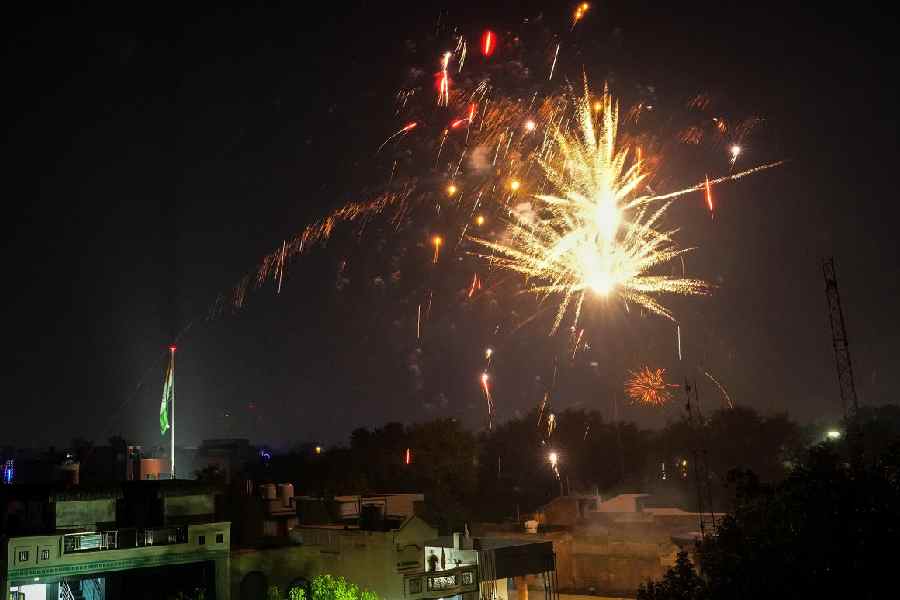|
|
A narrow, dim-lit, red hot passage like an alleyway leads to the dark recesses of Chittrovanu Mazumdar’s imagination. It is actually his studio in Harrington Mansions, above which is the opulent Harrington Street Arts Centre to which extends his exhibition, ...and undated Nightskin (till February 20). Mazumdar is based in Calcutta, yet for years he has not held any show here, and as if to make up for lost time, he has pulled out all stops to overwhelm viewers with a dramatic spectacle dominated by red and black and fleeting video images that are tantalizing in their transitoriness and changeability. It is a boldly conceived show of enormous proportion. Aesthetics apart, it is also a tremendous feat of coordinating and synchronizing a complex technological and engineering scheme that must function with clockwork precision. Rarely has an exhibition on such a scale ever been mounted in Calcutta and the effect is breathtaking. Viewers meander from room to room, many immersed in half light, and there is a surprise element in each of them.
The works are so different from one another visually and conceptually that one may find it difficult to readily discover a unifying thread. That reveals itself on several viewings as one allows oneself to be immersed in the flow of sensory experiences — the ebb and flow of images sweeping over and disintegrating in the videos which never reveal themselves fully, and the web of music and sounds that shrouds the show and intensifies the trance-like state that it induces.
One discovers certain images and ideas running like an undercurrent through the show — water gliding ineluctably, falling leaves, the scorched earth of Jharkhand where the artist’s father, Nirode Mazumdar, had built a retreat, voluptuous, phosphorescent blooms, the nocturnal city, and a great sense of impending doom that is emphasized by the ominous and stifling mechanical noises emanating from nowhere in particular. Woven into it are snatches of songs and music.
But Mazumdar could not have created this daedal overlay of optic and aural sensations by simply wishing it would happen. It is obvious that meticulous planning went into it — more than five years of work, says the artist. For it is a question of hanging at least a hundred framed pictures from the ceiling, rigging up a panel encrusted with the tiny bells of a ghunghru that start jangling in unison from time to time, putting together and installing those sinister, tall black ‘cupboards’ on wheels (dungeons of memory?) punctuated with ‘windows’ embedded with various ambiguous images, and making sure that the louvres open up and close to reveal just enough of the videos with the regularity of the respiratory system. Each of the hundreds of digital photographs Mazumdar had taken — both black-and-white blow-ups and tiny prints — was painted over and photoshopped individually. It also meant finding just the right materials to create the noctilucent ‘icicles’ (picture) made of stuff like mild steel and tube lights and acrylic on paper lit by ultraviolet lights, to quote the caption.
Such mundane acts and materials had gone into the making of this exhibition with a dramatic sweep that appeals to one’s sense of touch besides holding one spellbound with its grand gestures. Such gestures perhaps come naturally to Mazumdar if one remembers the giant canvases he had exhibited at the Victoria Memorial Hall, and a later installation in which he had made use of electric lights and other theatrical props. But this time, his style has matured and what seemed gimmicky earlier has transformed into an aesthetic realization of his ideas of transience, mutability and of night being the matrix of creativity.
The metaphor of night blossoms here in the large work with drapes created with swathes of heavy brocade and studded with big star-like crystals, and in the series of large canvases slathered with tar that flows into a lake of wax — binaries in conjunction. The black surface of tar resembles a riverbed from which the water has receded but which is still dewy with moisture. In the middle of the hall is a large ‘seed’ made of the iron contraption with which water is scooped out from one conduit and poured into another in a paddy field. The loam in the TFT display installed at one point of this work stresses the point.
The only weak point — an entirely subjective opinion — is the four-screen video (too much of a Mrinal Sen throwback). But when a work is of this dimension, can one afford to be pernickety?











